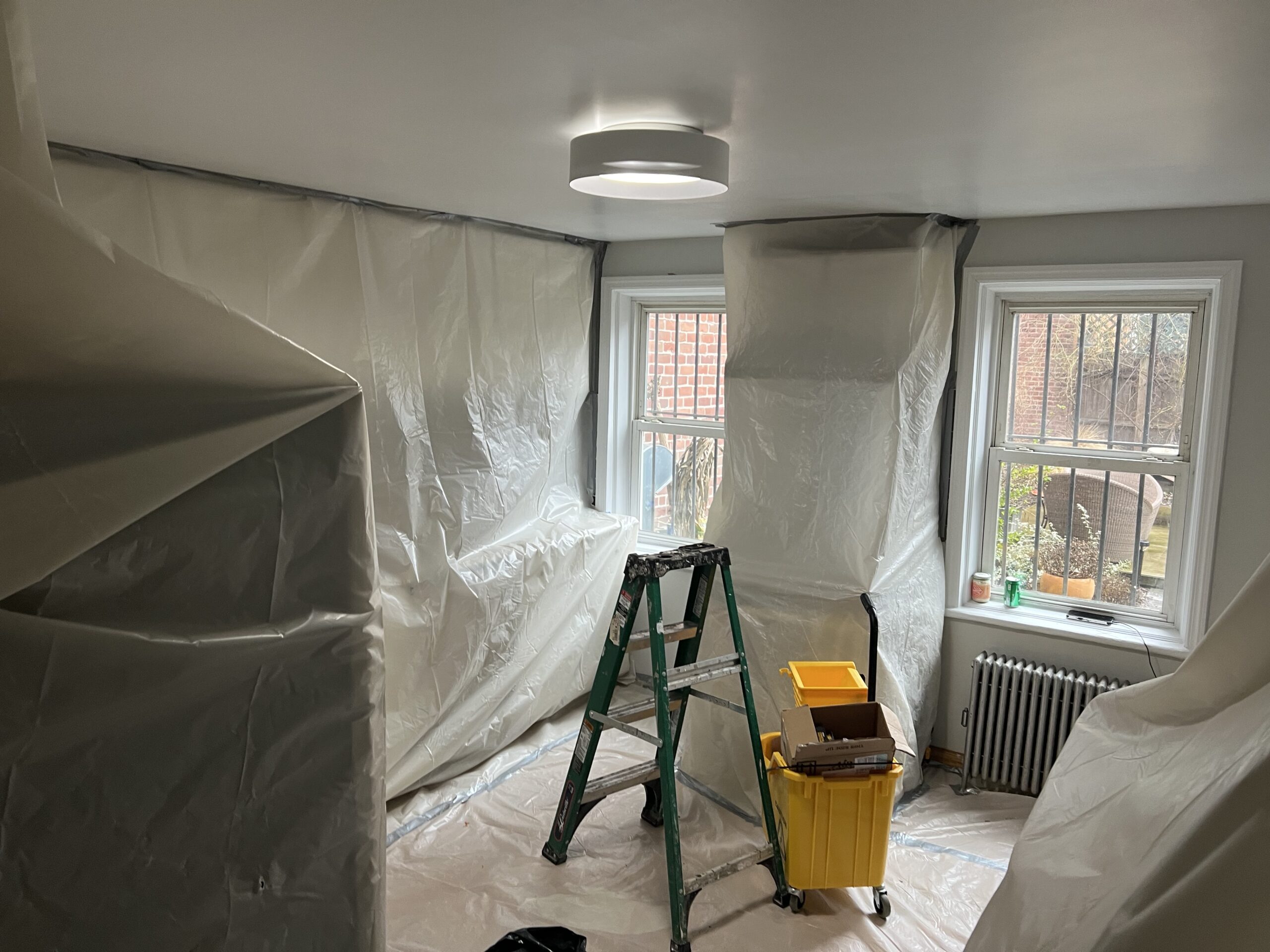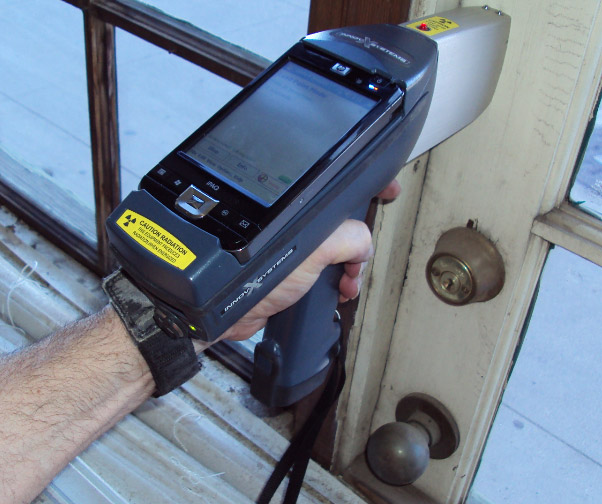Relied On Lead Paint Removal Company-- NYC's Premier Lead Abatement Service
Relied On Lead Paint Removal Company-- NYC's Premier Lead Abatement Service
Blog Article
Vital Tools and Techniques for Efficient Lead Violation Cleanup
Addressing lead offenses properly demands a detailed technique that blends the right tools with strategic techniques. The primary step involves equipping employees with Individual Protective Equipment (PPE) to guard their wellness. Concurrently, using specialized cleaning devices, such as HEPA vacuums and lead-specific cleansing representatives, is necessary for complete pollutant elimination. Efficient containment approaches, including plastic sheeting and adverse atmospheric pressure systems, are essential to protect against the spread of harmful materials. Moreover, safe disposal techniques and stringent adherence to regulatory guidelines make certain accountable handling of toxic waste. What are the nuanced methods that truly make a distinction?
Personal Protective Devices
Personal protective equipment (PPE) is a vital element in the efficient management of lead contamination cleanup. The important PPE for lead cleanup includes respirators, safety apparel, handwear covers, and eye security.
Respirators, especially those equipped with HEPA filters, are indispensable for filtering system airborne lead fragments, avoiding breathing. Protective apparel, consisting of coveralls and disposable fits, prevents lead dirt from adhering to employees' garments, reducing the danger of additional contamination.
Furthermore, extensive training on the proper use and maintenance of PPE is necessary. Employees should be enlightened on wearing and doffing treatments to prevent contamination. Normal assessments and substitutes of PPE components are needed to preserve their protective capabilities, making certain a safe and certified cleanup operation.
Specialized Cleaning Tools

One more crucial tool is the wet/dry vacuum, which can properly tidy up both dust and fluid impurities. These vacuums typically feature HEPA filters to give an additional layer of security. Damp cleans or tack cloths are likewise vital for surface area cleaning; they are specifically developed to catch and hold lead fragments, reducing the risk of spreading contamination.
For even more persistent down payments, specialized lead-removal cleaner are called for. These representatives are formulated to break down lead particles, making them simpler to eliminate. Scrub brushes with strong bristles can assist in this procedure, specifically on harsh surface areas where lead dirt tends to adhere more strongly.
Additionally, encapsulants are used to seal lead-contaminated surfaces, avoiding the release of lead dust. These specialized paints and coverings are developed to comply with different substrates, offering a long-term option for lead containment.
Reliable Containment Approaches
Efficient containment approaches are vital in alleviating the spread of lead contamination during cleaning activities. Implementing durable containment approaches makes sure that lead particles do not move to unaffected locations, thus protecting both employees and the environment (DOH & HPD Lead Violation Removal NYC).

To improve control, encapsulants can be used to surface areas that are not being eliminated or disturbed. These specialized finishes bind lead dust, lowering its accessibility for resuspension. In addition, all workers must use appropriate Individual Safety Devices (PPE), consisting of respirators and disposable matches, to avoid contamination spread.
Safe Disposal Practices
Making certain secure disposal techniques is a crucial part in the monitoring of lead contamination clean-up. Proper disposal minimizes the risk of lead returning to the atmosphere and jeopardizing public wellness (DOH & HPD Lead Violation Removal NYC).
Transferring lead waste needs adherence to stringent standards. Making use of qualified hazardous waste carriers guarantees that the materials are managed properly. Documents, consisting of shows up detailing the type and quantity of waste, should accompany shipments to track the waste from the site of origin to its final disposal location.
Designated hazardous waste disposal centers are equipped to take care of lead-contaminated products securely. These centers commonly utilize sophisticated techniques such as stabilization, solidification, or chemical treatment to neutralize the lead he said before disposal. Landfilling in specialized, lined locations that protect against leachate from infecting groundwater is an usual technique for last disposal.
Normal training for workers check associated with lead waste disposal is essential to maintain safety and security criteria and stop unexpected exposure. By sticking to these techniques, organizations can considerably reduce the ecological and health and wellness effects related to lead contamination.
Regulatory Compliance Tips

Sticking to governing conformity is critical in the successful implementation of lead contamination clean-up. Understanding and following government, state, and neighborhood policies makes sure not only the security and health of people but additionally the legal and economic well-being of the cleaning organization. The Environmental Defense Agency (EPA) establishes strict criteria, such as the Lead Remodelling, Fixing, and Painting (RRP) Policy, which mandates proper accreditation and training for contractors taking care of lead-based activities.
Compliance begins with a detailed assessment of appropriate legislations and regulations. Organizations needs to remain updated on any type of legislative modifications, which can be assisted in with regular training sessions and registering for industry updates. Documentation is an additional vital conformity element; preserving in-depth records of all activities, including assessment reports, employee training logs, and disposal shows up, is essential.
Furthermore, involving with certified lead inspectors or risk assessors guarantees that lead risks are correctly identified and mitigated. Employers must enforce the usage of Individual Safety Devices (PPE) and make sure that security protocols are strictly followed. Last but not least, clear interaction with stakeholders, including employees, customers, and governing bodies, will certainly promote a culture of conformity and liability, eventually contributing to a safer and extra effective lead clean-up process.
Verdict
Effective lead violation cleanup demands the combination of specialized tools and critical methods to ensure safety and security and effectiveness. Making use of HEPA vacuums, specialized cleansing agents, and reliable containment approaches such as plastic sheet and adverse air pressure systems is vital. Individual safety tools website here (PPE) safeguards workers from direct exposure, while safe disposal methods and strict adherence to regulative conformity are vital for sensibly handling unsafe waste. Collectively, these procedures significantly alleviate wellness risks and add to a cleaner setting.
Report this page